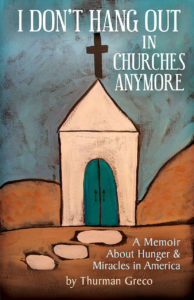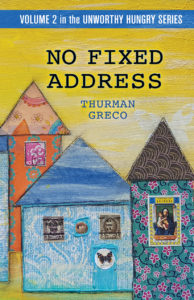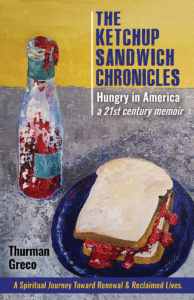Salt in the Food Pantry World
If what the historians tell us is correct, people have been eating salt for over 6000 years. They’ve also been using salt in all kinds of industries. And, in fact, only 6% of the salt manufactured in the world today is used for food according to the Maldon Salt Company.
Salt has, throughout time, played a significant part in wars, commerceand religion throughout the world.
In 1930, Gandhi led a march of 100,000 people protesting a salt tax levied by the British.
It is believed by some historians that ancient trading routes throughout the world began when different cultures bought and sold salt.
Salt is used in religious ceremonies in all the major world religions.
Salt is still an important commodity for all of us.
Before the Good Neighbor Food Pantry got sooo crowded and before our time was sooo limited in the pantry, the shoppers got to read the labels on the cans.
This was important for our shoppers. After all, most of them had no health care to speak of. Their only means of caring for themselves was eating properly.
What a challenge in a pantry!
A typical pantry shift included many people reading canned good labels trying to figure out which items had safe levels of salt, sugar, added chemicals, preservatives, hydrogenated fats, artificial colors, flavors, high fructose corn syrup.
One of the basic problems with pantry canned goods was the prevalence of products with outrageous amounts of salt.
We had a number of seniors suffering with hypertension and a low salt food product was important to them.
This issue still exists in pantries to a certain extent even though the Hunger Prevention Nutrition Assistance Program people began limiting the availability of many high salt products on our food order inventory.
Everyone, pantry shopper or not, is encouraged to reduce sodium intake to less than 2300 milligrams a day. That’s about 1 teaspoon. Adults over 50, and people with high blood pressure, diabetes, or chronic kidney disease should reduce the sodium intake to 1500 per day.
So, how can this be done most easily?
EAT FRESH FOODS. THEY ARE LOWER IN SODIUM THAN PROCESSED FOODS. Stay away from cheesy foods (pizza), bacon, sausage, hot dogs, deli meats, canned chili, canned ravioli, and canned soups.
EAT AT HOME. The meals you prepare at home are more nutritious because you’re in control of the ingredients.
EAT PLENTY OF VEGGIES AND FRUITS. Fresh/frozen vegetables and fruits have much less sodium. Try to eat them at every meal.
CHOOSE PRODUCTS THAT ARE LOWER IN SALT. This means choosing fat-free or low-fat milk, yogurt.
Choose fresh meats rather than eating deli meats which have much more salt. Choose unsalted nuts.
FORGET THE SALT. Remove the salt shaker from the kitchen counter and the dining table. Choose spices, herbs, vinegar, lemon juice, pepper instead.
READ THE LABELS ON THE FOOD. Choose foods which are labeled “low sodium”, “reduced sodium” and “no salt added.”
CHOOSE LOW SODIUM CONDIMENTS. Some condiments such as soy sauce, pickles, olives, salad dressings are high in salt. Choose the low sodium variety.
And, of course, it’s all about choice. Choice is a rare commodity if you are shopping in a food pantry because you have no money. (And, why else does one shop in a food pantry?)
Food pantry shoppers have very little control over what they eat because they can’t afford to shop in the grocery store with thousands of choices. Neither can they afford to shop in the farmer’s market.
One way people can help the situation is by donating healthy foods to a pantry. As a donor of food to a pantry, you are the one making the choice. When you choose, for example, to give a low sodium soy sauce to a food drive, you are responsibly choosing a healthier product for someone who has absolutely no money to make such a choice.
Thank you for shopping and donating healthy foods to your food pantry and soup kitchen.
Thanks for reading this blog/book.
Please share this article with your preferred social network.
Please send a comment.
Peace and food for all.
Thurman
Walmart Saves the Day – Again and Again and Again
We found Walmart by accident. We certainly didn’t start out with Walmart on the list that day.
It was early October. We’d opened the Reservoir Food Pantry just three weeks before and were already realizing how much food and money we were going to need. So…it was time for a food drive.
We needed to bring out the “big guns” as they say in Texas.
Bonnie and Prasida drove over to Kingston to the mall and began the hunt.
First stop: Hannaford’s
“We’re voluntering at a brand new pantry in the area, the Reservoir Food Pantry, and
we want to hold a food drive. Can we schedule a food drive in front of your store?”
“Sorry, it’s against our corporate policy.”
(I do need to relate that Hannaford’s donates food to the Food Banks.)
Second stop: Target Stores
“Sorry, it’s against our corporate policy.”
(Again, Target donates to the Food Banks.)
Third stop: Lowe’s
“Sorry, it’s against our corporate policy.”
So much for the mall and the big box stores. What now?
Prasida and Bonnie called: “Where are we going to go now Thurman? Maybe it’s time to go home and think of another plan.”
“Wait, there’s one more place left.”
WALMART!
“We’re from a brand new pantry in the area, the Reservoir Food Pantry, and we want to hold a food drive. Can we schedule a food drive in front of your store?”
“Sure, let me get my store calendar. When do you want to come?”
What a lifeline! We’ve been soliciting outside the Kingston Walmart for three days in every month since October. Two months we didn’t come (November and December) because the Salvation Army is stationed outside their doors for Christmas.
We stand outside the door with the 21st century version of a tin cup (a large clear plastic jar) and ask everyone who comes into the store for a donation of either food or money.
I have to admit, this is such a positive experience. Little children drop coins in the jar, gruff adults soften up their postures for a moment and share for the hungry. We ask for $1. We are sooo grateful when someone drops in change.
We are sooo grateful when someone drops in $2 or $5 or $20.
The generosity of the Walmart customers and the Walmart management are sustaining our pantry. The Reservoir Food Pantry is thriving because of their trust in us and our pantry. When we make decisions in our board meetings, we are not only making decisions for our shoppers and sponsors, we are making decisions about our pantry knowing that a very large group of people counting on us to feed the most people needy people possible.
This offers an added layer of integrity to the mix.
The donations of the people walking into Walmart to shop have paid for our gasoline to travel back and forth from Latham weekly.
The donations of the people walking into Walmart to shop have paid for our 501(c)3 fees.
The donations of the people walking into Walmart to shop have paid for our office expenses.
The donations of the people walking into Walmart to shop will pay our utilities.
Last Wednesday, I was standing at a table in front of the Walmart alone and for a moment no one was around. Just this huge box store behind me and the gorgeous mountains in front. Quietly, a woman walked up to the donation jar, placed her hands around it and prayed.
Thank you for reading this blog/book.
Please send a comment.
Please share this article on your preferred social network.
Peace and food for all.
Thurman Greco
A True Story Told Through the Eyes of a Small Town Food Pantry
Recent research shows that many children who do not have enough to eat wind up with diminished capacity to understand and learn. Children don’t have to be starving for this to happen. Even milk undernutrition – the kind most common among poor people in America – can do it.” – Carl Sagan
I feed the unworthy hungry. Week after week, month after month, year after year, they come to the pantry and I feed them.
I give each of them a three-day supply of food which they must make last for a full seven days.
Each month, it seems, the lines get longer. The storeroom gets fuller and fuller on food delivery day until it’s stuffed with so much food that we’re wondering if we can walk in the place. Before the next month’s shipment arrives, the room is empty.
Well, I’m just an out-of-control, stubborn old woman who won’t listen to anyone in the town. I just snub my nose at them and keep on going.
I hear them:
“Thurman, how can you serve food to her? Her son works and she has a car. She shouldn’t get food.”
“Thurman, that woman lives in Kingston. You gave food to a family from Shandaken last week. Our pantry should be for Woodstockers only.”
“Thurman, you are serving entirely too much food to these people. You can’t do this.”
“Thurman, why are you serving fresh fruits and vegetables in the pantry? You shouldn’t do this.”
“Thurman, you’ve begun to open the pantry in the afternoons. Our pantry shouldn’t be open in the afternoons.”
“Thurman, that person’s car is too nice. How can you give food to a person with a car like that?”
“Thurman, you can’t serve this food to these people. They’re going out of here with $70-$80 worth of fresh produce. This is wrong. I’m going to tell Pastor Sonja, Ed Jabbs, and Pastor Bode about this. I’m very close to Pastor Sonja and she’s not going to be happy. You’re feeding the unworthy hungry.”
“Thurman, you’re serving entirely too many people here”.
“Thurman, you’re serving all the wrong people.”
“Thurman, you shouldn’t feed this food to these people. If they’re hungry enough, they’ll eat anything.”
Well, what can I say? I serve them with pride. It’s an honor and a privilege to do this.
And also…I work for the Hunger Prevention Nutrition Assistance Program of New York State. The HPNAP people are my supervisors.
I was trained to serve a three-day supply of food to everyone according to the “Open to the Public” feeding program policy which includes all populations without regard to gender, race, color, ethnicity, age, nationality, citizenship, marital status, sexual orientation, religious affiliation, income, disability, or health status. We do not exclude any population group from receiving services upon first request or repeat visits to our pantry.
A three-day supply of food offers three meals a day for three days to everyone in the household. Each meal includes foods from three of the five food groups.
In all the years, through all the conflict, I was never, ever, able to convince anyone that I had a superior who outranked the building committee of the Woodstock Reformed Church, or the Christ Lutheran Church.
Thank you for reading this blog/book.
Please share this article with your preferred social network.
Please send a comment.
Peace and food for all.
Thurman Greco
Food Pantry Blog – Ho Hum, Just Another Pantry Miracle in the Good Neighbor Food Pantry
“You must do the thing you think you cannot do.” – Eleanor Roosevelt
Well, maybe you don’t believe in miracles. I do. I was in denial for the longest time. But, after a while, I had to face reality. There were simply too many coincidences.
One September pantry day the lines were longer than usual and the shelves were emptying out fast. “I think we’re going to run out of food” I mentioned under my breath to Marie Duane, a volunteer from St. Gregory’s Episcopal Church.
“Do we have a plan for this kind of event?” I asked myself.
Just then, as if someone had blown a whistle, a red haired woman drove up in a tan SUV filled with bags of food she had collected from Congregation Agudas Achim in Kingston. Harriet Kazansky unloaded enough canned and boxed food to get us through the day with some food left over!
One December, the week after Christmas to be exact, John Mower drove up with a trunk load of canned vegetables for the pantry in his car. What a gift! Our pantry was totally depleted in December. Then, the next pantry day, along came another trunk load. He finally quit after three trips to the pantry. He filled our shelves for the next pantry day.
One Tuesday morning in the pantry, Peggy Johnson was upset because she didn’t have enough food to prepare the take out bags for the fourteen families she delivered food to. Food had been scarce and this week the take out area seemed to be empty. A large man suddenly walked in the door carrying a very large box filled with canned and boxed items. A Kingston fireman who grew up in the Woodstock area, he made Peggy promise not to tell his name. However, she didn’t have to keep his gift a secret: In one trip down the pantry hallway, carrying a box large enough to hold everything need, he singlehandedly provided all the food for fourteen homebound families that week. Our pantry has never heard from him since.
In the pantry hallway, we had an Items of Dignity closet where shoppers could take a roll of toilet paper and one other item each time they shopped. We were forbidden by the building committee to have clothing in this closet.
As luck would have it, Prasida needed a pair of winter boots. One Wednesday afternoon, I noticed a pair of new boots – in her size. They were hidden in a dark corner of a shelf. One of the volunteers took them off the shelf. “Prasida, can you wear these boots?” Prasida came over the closet, looked them over, and put them on.
“Ahhh – a perfect fit! Thank you Amma! Now I won’t have cold feet this winter in my summer sandals.” Ho Hum. Just another pantry miracle.
At one point, I was reading Doreen Virtue’s book, “Archangels and Ascended Masters.” One night I read about Saint Therese, also known as the Little Flower. The story goes that if one prays to St. Therese, she will send a rose as a sign that the request has been heard. The next day, I found a rose on the pantry floor as I walked in the room.
But the real miracle happened repeatedly in the pantry as the shoppers and volunteers both began to heal and change and grow from the community, their commitment, and the experiences in the pantry. When people first started coming to the pantry, either to volunteer or shop, they were focused inward on their own problems, issues, health, etc. After a short time, they began to focus on their friends in the pantry. They became concerned about something bigger than themselves and their private struggles.
In short, they became new.
Thanks for reading this blog/book.
Please share this article with your preferred social network.
Please leave a comment.
Peace and food for all.
Thurman
Food Pantry Blog – Peggy’s Take Outs – Guy, Rich, Jamie, Prasida, Father Nicholas, the Anderson Crew
Peggy organized delivery teams. Guy Oddo delivered food to four clients. Rich and Jamie Allen had a delivery. Prasida Kay had three deliveries. Laura Rose had two deliveries. Father Nicholas had three deliveries. The Anderson Crew had six deliveries.
Andrea from the Food Bank of the Hudson Valley came out one day and spent over two hours conferring with Peggy and answering all her questions.
Peggy had special food sources for her take out clients. Anyone who donated food to the pantry was donating to Peggy’s Take Outs. (So many people were using the pantry that only case lots were used in the pantry room itself.)
Peggy had absolutely no problem calling up a church and asking for food.
“Hello, this is Peggy Johnson. Can I talk with your pantry representative?”
“Hello, this is Peggy Johnson. We’re really short of toilet paper for our shoppers this month. Can your congregation get some toilet paper for our take outs?”
“Hello, this is Peggy Johnson. It’s your congregation’s month at the food pantry. Can you organize an Items of Dignity drive for the pantry? We really need toilet paper, tooth paste, and razors.”
Nothing stopped Peggy.
Not rain
Not sleet
Not snow
Not 100 degree afternoons
Not power outages.
On a couple of occasions when there wasn’t light in the storeroom, Peggy used a spelunker’s flashlight hooked to her head.
Every Tuesday morning, promptly at 9:01 a.m., Peggy walked into the Woodstock Reformed Church hallway and set up long tables along the wall on which would be placed donated food from the Hurley Ridge Market.
By 9:15 a.m., Barry Greco brought the food from Hurley Ridge Market over. There were usually six to ten boxes in his Jeep: fresh vegetables, fruit, bread, and baked goods.
Peggy, Jamie, Prasida, Laura, Amy, Marvalene, and Leticia went to work immediately, working as fast and furiously as possible. By 11:00, every bit of this food would be sorted in bags for delivery to homebound households. The bags had to all be packed and loaded in cars by 11:30 for delivery because the fresh produce had to be removed from the building by noon.
Hallway tables were total chaos on Tuesday mornings. The Take Out team was stationed in front of the tables packing bags with produce, bread, while the Anderson Crew, along with other volunteers, were moving up and down the halls with carts filled with cases of canned beans, cooking oil, mayonnaise, canned fruits, canned vegetables, crackers, cereal, pasta, etc. Leticia worked quickly to get as much food into the pantry room as possible before the Anderson Team arrived but there was always food which still needed to be brought out by the team.
“Look out behind you Prasida!”
“Hey Jamie, here comes a cart!”
“Where are the oranges? My client loves oranges. I know I saw some earlier!”
Empty cardboard boxes piled up. It took several volunteers working together to break them down. Tony Cannistra, Marcos and Jonah from Anderson, Richard Allen, Guy Oddo, Dr. Tom Dallow, and everyone else we could get to do it, broke down boxes and then, finally loaded them into Vanessa.
The fact that there was never an accident with all the commotion in the hallway on Tuesday mornings proves there are guardian angels and they don’t sleep on the job.
By 1:00, we all changed hats. The pantry shelf stockers in the morning became the afternoon take out crew and packed next Tuesday’s bags with cans and boxes.
Peggy supervised every item that went into these bags. It was no easy task.
It didn’t matter to this crew.
This was a very cohesive, dedicated team of people who realized that if the food didn’t go out the recipients wouldn’t eat.
The food went out.
Thank you for reading this blog/book.
Please share this article with your favorite social network.
Please leave a comment.
Peace and food for all.
Thurman Greco
Food Pantry Blog – What This Blog is About
Recently I was asked to explain what the hungerisnotadisease.com
blog is all about.
Well, for me, this blog has several layers.
First, there is the layer of the food pantry. This is a story in itself: intrigue, expose’, scandal, denial. On some level, the story of the Good Neighbor Food Pantry might as well be a mystery novel.
But, dig deeper. This blog is about the people who visit the pantry weekly…the voiceless people who are becoming more and more in number weekly. This is an incredible story in itself also: intrigue, expose’, denial.
And, on yet a deeper level, this blog is about the spiritual journey we are all on as we experience incredible change in our society. Most of this story is still, as yet, unknown to many, many people.
Because, you see, hunger as evidenced by food pantries, soup kitchens, shelters is still a taboo subject.
So…my challenge is to best tell this story, expose the shame that is being orchestrated by many people, and reveal the denial that many people still persist in perceiving.
What is going to work best?
Thank you for reading this blog/book.
Please share this article with your preferred social network.
Please share a comment.
Don’t forget to join my mailing list.
Peace and food for all.
Thurman Greco
Food Pantry Blog – If Only….
The inspiration for this chapter came from a quote written by Janet Poppendieck, author of a book about hunger in America entitled “Sweet Charity”.
There’s all this food out there. Most people who know about hunger agree there’s enough food for everyone. If we would stop the push back on this concept, and just feed the people, our lives (everyone’s lives in the whole country) would be very different. Imagine a world without hungry children and grandmothers.
Just for a moment, think of all the ways we can benefit our many people and institutions by using this extra food.
For starters, think of pantries, soup kitchens, shelters, as our tax dollars at work. Much of the emergency food effort is manned by volunteers diverting food headed for the landfill. For my money, this recycling effort works primarily to keep people from starving in the streets.
Now, consider the United States Department of Agriculture. As our country accumulates agricultural surpluses, instead of being embarrassed by the food, life would be better if the USDA could proudly distribute the surplus to those in need. After all, surplus food is an uptown problem. It’s almost impossible to produce exactly what we need. Farms don’t work that way. Weather doesn’t always cooperate. Droughts don’t come by request. Floods have minds of their own. It’s better to produce too much than too little.
Businesses can and should ship excess food to pantries, soup kitchens, shelters. This is a responsible way to dispose of unwanted excess food products. When grocers donate to food banks, they avoid excessive dump fees and accrue tax savings. They reduce dumpster diving.
Universities, hospitals, caterers, restaurants, bakers, schools, can use Food Banks to absorb leftovers. In metropolitan areas, the surplus food can go directly to soup kitchens, pantries. This is both a civic responsibility and community outreach.
Community colleges and Universities can recognize there are impoverished students, staff and faculty in their ranks. Pantries and soup kitchens on campus will make it easier for students and staff to stay.
Elementary, Middle, and High Schools would do well to recognize the poverty among the students and staff. Food Pantries have a definite place in schools. Backpack programs should be in every school to ensure that students have enough food to eat over the weekends and holidays.
Churches, Synagogues, and other religious institutions have opportunities to express concern for their fellow man as they include the poor at the table. Congregations refer to their feeding efforts as outreach. These necessary hunger prevention programs feed people who otherwise would not have enough to eat and they give the congregations a local outlet for charity and outreach programs.
Courts and penal institutions can use this concept by having people work service hours at pantries, soup kitchens, shelters, to avoid or lessen incarceration.
Working at a pantry, soup kitchen or shelter provides service opportunities for people of all ages. The more people donate time, the less isolated these facilities become.
Diverting food from landfills offers communities an opportunity to improve our environment. Besides, why throw away good food?
Thanks for reading this blog/book.
Please share this article with your favorite social media.
Peace and food for all.
Thurman Greco
Food Pantry Blog – Reservoir Food Pantry Opens Its Mobile Pantry Location Today
Today, March 31, at 2:00 p.m., the Reservoir Food Pantry will open the doors at its new mobile location in Boiceville. This new pantry is located on Route 28 in Boiceville at the intersection of 28A. You’ll find us behind Roberts Auction.
Since September 9, 2013, Reservoir Food Pantry volunteers have been delivering food weekly to homebound households and senior complexes in the area around the Ashokan Reservoir in Ulster County New York.
The Reservoir Food Pantry is primarily a vegetarian pantry, offering many fresh foods to include produce, baked goods, and dairy products. Volunteers will be driving to Latham and/or Cornwall weekly on Monday mornings to bring back the freshest possible produce to the pantry for the shoppers in the afternoon.
Designated a Mobile Food Pantry by the Food Bank of the Hudson Valley, volunteers will continue to deliver food to homebound households and expect to increase the number of locations where they will be offering food.
Volunteers are currently raising funds for a truck to increase the effectiveness of the pantry.
The Reservoir Food Pantry is servicing an area with very few food pantries.
For more information, please call 845-399-3967.
Peace and food for all.
Thurman Greco
Food Pantry Blog – 9 Things You Can Do To Help the Homeless In Your Area
“People are living in tents. They’re living in cars. They’re living in the woods.” – Ginger Segal
Be a friend to Mother Earth by donating instead of dumping food, growing fresh produce and donating it to your local food pantry, donating clean egg cartons and reusable shopping bags pantry volunteers to share with shoppers.
Donate food to a homeless friendly pantry in your area. A homeless friendly pantry doesn’t discriminate against homeless shoppers by demanding identification with addresses. After all, homeless people don’t have an address and cannot shop in those pantries requiring detailed identification.
Donate food to a pantry in your area that distributes food the homeless can eat. Homeless people carry their kitchens in their pockets so a lot of food which we take for granted and use is just not useful for the homeless person. Homeless people need peanut butter and crackers, cereal in small packages, fruits and vegetables to be eaten raw: carrot sticks, strawberries, blueberries, celery sticks, etc. Milk in small containers is useful.
Give a little throughout the year by regularly donating to the pantry in your area which is most homeless friendly.
Volunteer at a homeless friendly pantry or soup kitchen.
Communicate with Persons of Influence by contacting elected officials about homeless issues in your area and encouraging them to make ending homelessness a priority.
Get organized by cleaning out your food pantry and donating the healthy items to the food pantry. Donate clothing and bedding in good condition to places where you feel the homeless will have access to some of the items.
Understand that returning vets have special needs and they often begin their separation from the military homeless.
Know that people being released from prison often are homeless. They no longer have contact with their community. They have no job. They have no place to go.
Help set up a pocket pantry in a church, synagogue, or school.
Peace and food for all.
Please share this article with your favorite social network.
Thurman Greco






